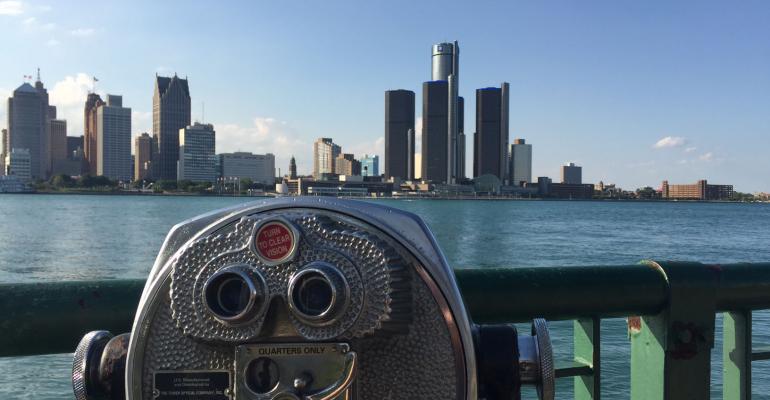Detroit’s industrial sector has surged right along with the success of the national market, and strong automotive sales and lack of new construction have pushed the city to a new low of 6 percent vacancy in the second quarter.
Motor City is following second quarter national trends. Industrial availability declined to 8.8 percent during the period, dropping for the 25th consecutive quarter, the longest streak on record, according to a CBRE report. E-commerce growth continues to fuel demand for most of the country, and industrial properties, both manufacturing and warehouse, remain one of the best performing asset classes in commercial real estate, said Jeffrey Havsy, CBRE’s chief economist for the Americas, in a recent statement.
“While we’ve had some shocks to the global economy, the U.S. economy still is moving along at a slow and steady pace, and that will sustain industrial demand,” he said.
The health of the automotive market continues to be the major driver of the Detroit industrial market, however. Spurred by automotive expansion, absorption has pushed vacancy in the region to extremely low levels, says John DeGroot, research manager at real estate services firm NGKF.
“You can’t find a lower vacancy rate in Detroit in the past 20 years,” he notes. “A big part of it is auto sales. The average yearly sales mark for the Big Three was around 16 million since 2002. During the recession we saw it dip to 10 million, but now we’re hitting 17.5 million per year.” Auto experts predict that figure will continue in 2016.
Typically, the suburbs around Detroit have fared better with industrial leasing and construction, with I-75/Auburn Hills, Macomb county and Western/Southern Wayne county being the preferred locations for new, modern facilities. However, though Detroit proper has many obsolete or dilapidated industrial buildings, the city is now a major draw for new construction as well, DeGroot says. Since 2015, the city has seen more than 765,000 sq. ft. of new construction completed, according to a second quarter NGKF report.
There’s more than one million sq. ft. of build-to-suit construction planned for the Detroit area, according to the CBRE report. For example, agreements have been finalized for a national center for connected and automated vehicle research testing, product development, validation and certification at the former Willow Run Powertrain Plant site in Ypsilanti Township, located west of Detroit. In the city itself, Flex-N-Gate recently agreed to invest around $100 million to build a 500,000-sq.-ft. auto parts plant that will supply Ford Motor Co. on 30 acres of the I-94 Industrial Park.
However, what’s more interesting is that speculative development has now begun to overtake build-to-suit construction in the Detroit area, a sign that developers are confident in the market’s future, according to CBRE. Spec development increased from 400,000 sq. ft. in the first quarter to 1.2 million sq. ft. in the second quarter, with projects such as Titan Group’s development of nearly 300,000 sq. ft. in Cherry Creek Corporate Park in Shelby Township, and the redevelopment of the former Sunnybrook Golf Course in Sterling Heights into Enterprise Industrial Park.
Increased demand since the recession have pushed rents up by about 35 percent, DeGroot says. In the second quarter, the direct leasing rate rose above 5.0 percent for the first time since 2009. New product coming online will likely push vacancies up, however, and could drop rents back down again by the end of the year, a trend that should occur in many major markets, Havsy said.
“We think demand will slow a little and supply will continue to ramp up,” he noted. “Vacancy will bottom out this year and then slow start to rise.”

